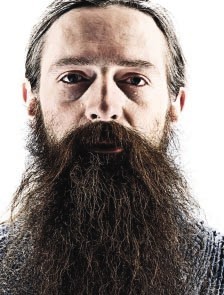Harvard team successfully reverses the aging process in mice
By Loz Blain
23:04 November 29, 2010
Telomeres
The Harvard study focused on part of the cell division process called 'telomere shortening.' If you picture a chromosome as an X-shaped unit of DNA, the telomeres are the little caps at the end of each strand.
As cells divide, their DNA splits in half to form two new cells – but a bit of genetic information is lost at the end of each strand with each division. That's what telomeres are for – they contain a bunch of useless DNA that acts as a buffer zone so that no important DNA is lost from our chromosomes. Gradually, over time, the telomere erodes away to a level where each cell division actually starts destroying bits of important DNA – and this gets to a point where the cell can no longer reproduce itself. You can imagine what that starts doing to bodily organs as time goes by.
So in a way, telomeres are there as a built-in limit to how many times a cell can divide itself – they're part of the built-in biological clock that causes aging, body deterioration and death.
The Harvard Study
And that's where this recent study was focused. Ronald DePinho and a team of Harvard colleagues experimented on mice to see what happens when steps are taken to stop telomeres from shortening.
The group looked at the enzyme telomerase, which can replenish the telomere after replication and effectively lengthen it so that a cell can live for longer.
They bred a group of genetically-engineered mice that lacked the ability to produce telomerase – and watched as these mice showed rapid and very early onset symptoms of aging.
Then, they gave the mice injections to re-activate the telomerase enzyme – expecting to see the aging process slow down to normal levels. Instead, they watched in astonishment as the mice appeared to age backwards, their withered organs repairing themselves even to the point of new neurons beginning to sprout in their brains.
In essence, repairing the telomeres seemed to be able to reverse the aging process and make the mice physiologically younger, despite already suffering the ravages of age.
But it's not so simple for humans
While this study was a huge step forward in our understanding of how telomeres and telomerase impact the aging process, there's a big issue preventing this sort of treatment from going straight into human testing.
Mice produce telomerase all throughout their short lives, but the enzyme is switched off in adult humans with our longer life spans, because when our cells are allowed to divide and replicate unchecked, they have a nasty habit of developing into cancers.
Although a telomerase-activating compound was recently discovered, telomerase rejuvenation in adults is directly linked to the development and spread of cancers throughout the body – so while a telomerase-based anti-aging treatment might produce valuable results in older humans, scientists also believe it would kick the risk of cancer up several orders of magnitude.
So the study isn't the sort of breakthrough that will lead directly and immediately to any sort of treatment for humans – but it's another step forward in science's inevitable march towards human immortality. Imagine what a gift it would be for an 80-year-old to be given an injection that could tell the cells in his body to rebuild itself in the physical health he enjoyed as a 25-year-old, knowing everything he knows.
There are already debates flaring over the ethics of extending lifespan, and the question of whether humans should submit themselves to the long-accepted ravages of aging and death or use our amazing command of science to avoid them. But the fact is, we're going to work out how to do it sooner or later, whether or not it involves this sort of telomere repair process, and a significant number of people will want to use such a technology to repair their bodies and see what life is like in the next few centuries.
Would you be one of them?


